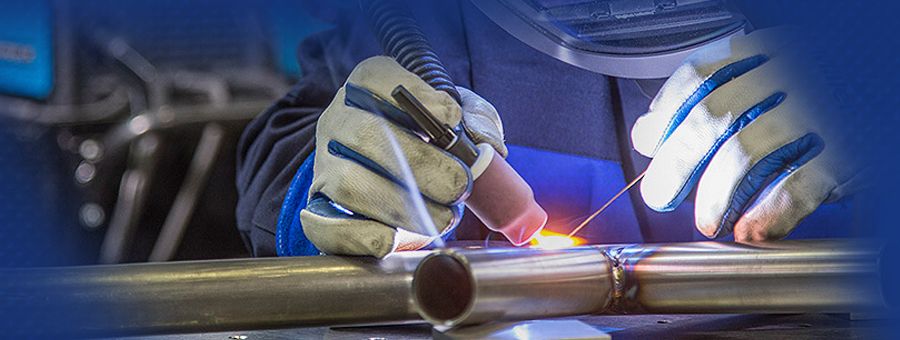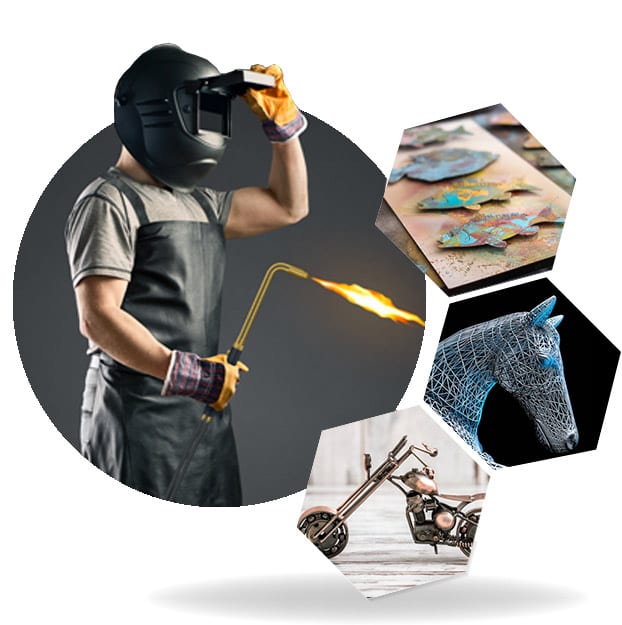All Regarding Welding: Secret Insights Into Techniques and Best Practices for Success
Welding incorporates a range of strategies, each matched for specific materials and applications. Understanding these techniques, such as GMAW, SMAW, and TIG, is crucial for accomplishing optimal results. The right devices and safety methods can not be neglected. As preparation and troubleshooting play essential functions in the welding process, grasping these aspects can considerably boost the quality of the last product. What are the essential elements that guarantee a successful weld?
Recognizing Different Welding Methods
Welding techniques include a range of approaches, each matched to specific applications and materials. Among the most common strategies are Gas Steel Arc Welding (GMAW), Secured Steel Arc Welding (SMAW), and Tungsten Inert Gas Welding (TIG) GMAW, likewise called MIG welding, is preferred for its speed and convenience, making it suitable for thin materials. SMAW, or stick welding, is favored for its simplicity and performance in exterior settings, specifically with thicker metals. TIG welding supplies precision and control, making it suitable for elaborate work and non-ferrous steels (Montana Mobile Welding and Repair Belgrade Fabrication). Each method has its special advantages and factors to consider, enabling welders to pick the most effective approach based on the task's needs, material type, and wanted end results. Recognizing these strategies is important for successful welding
Essential Welding Equipment and Tools
While different welding methods need particular abilities, the ideal tools and tools are similarly necessary for achieving high quality results. Necessary welding equipment includes welding machines, which differ depending on the method-- such as MIG, TIG, or stick welding. Protective equipment, including gloves, helmets, and aprons, assurances security and comfort throughout the process. Furthermore, clamps and components assist safeguard products in area, making certain accuracy in welds. Consumables like welding rods, wire, and securing gas are also crucial components that affect the top quality of the weld. Additionally, devices such as cutters and mills facilitate surface prep work and post-weld completing, adding to a professional outcome. Spending in premium devices eventually boosts the efficiency and performance of welding jobs.
Safety And Security Practices in Welding
Appropriate safety and security techniques are essential in the welding industry to safeguard employees from possible hazards. Welders need to put on appropriate personal protective equipment (PPE), consisting of helmets with appropriate shading, gloves, and flame-resistant clothes. Ample air flow is vital to lower exposure to unsafe fumes and gases created during the welding process. Furthermore, workers ought to be educated in the right handling of welding equipment to avoid crashes. Fire precaution, such as maintaining combustible materials far from the welding location and having fire extinguishers conveniently available, are essential. Normal assessments of equipment and offices can aid identify prospective risks prior to they bring about mishaps. By adhering to these safety practices, welders can develop a more secure working setting and lessen threats connected with their profession.
Readying Products for Welding
Preparing materials for welding is a crucial step that considerably influences the quality and integrity of the last product (Belgrade). Appropriate preparation includes cleansing the surface areas to eliminate impurities such as dirt, oil, and rust, which can compromise the weld. Strategies such as grinding, sanding, or using solvents are generally utilized to accomplish a tidy surface. Furthermore, making certain that the products mesh snugly is vital; voids can lead to weak welds. It's likewise essential to think about the alignment and positioning of the components, as this will certainly impact the simplicity of welding and the last result. Lastly, selecting the appropriate filler product and making sure compatibility with the base metals is crucial for accomplishing solid, sturdy welds
Tips for Getting High-Quality Welds
Achieving high-quality welds requires attention to information and adherence to ideal practices throughout the welding process. Proper joint prep work is essential, ensuring surface areas are complimentary and clean from impurities. Choosing the proper filler material and welding method based upon the base steels is crucial for excellent bonding. Maintaining constant travel rate and angle while welding can avoid defects and advertise harmony. Furthermore, managing warmth input is crucial; extreme warm can result in bending and deteriorated joints. Regularly examining the welds during the process allows for prompt adjustments if necessary. Utilizing proper post-weld treatments, such as cleansing and stress relief, can boost the sturdiness and honesty of the weld, inevitably making certain a successful end result.
Fixing Common Welding Issues
Welding typically offers difficulties that can influence the quality and honesty of the end product. Typical issues such as porosity, irregular weld grains, and overheating can emerge, each requiring specific troubleshooting strategies. Understanding these issues is vital for welders to improve their abilities and achieve perfect outcomes.
Porosity Troubles Described
Although porosity can usually be forgotten, it stays a vital problem in welding that can endanger the honesty of a completed item. Porosity describes the existence of little gas pockets within the weld bead, which can compromise the joint and lead to premature failure. This trouble commonly arises from pollutants, dampness, or inappropriate securing gas protection during the welding procedure. To alleviate porosity, welders must validate that the base products are completely dry and tidy, use proper securing gases, and maintain regular welding parameters. Regularly evaluating the devices and atmosphere can likewise assist determine possible issues before they manifest in the weld. Attending to porosity successfully is vital for attaining strong, sturdy welds that fulfill high quality criteria.

Irregular Weld Beans
Inconsistent weld beads can substantially impact the high quality and strength of a finished item. Various factors add to this concern, consisting of inappropriate traveling rate, wrong amperage settings, and irregular electrode angles. When the welder relocates too promptly, a bead may appear slim and do not have infiltration, while relocating as well gradually can create extreme buildup. Additionally, making use of the wrong amperage can cause either damaging or extreme spatter, both of which concession weld honesty. The welder's strategy, such as inconsistent torch movement, can likewise bring about unequal bead appearance. To mitigate these issues, welders must concentrate on keeping constant, controlled activities and making certain appropriate devices settings to attain uniformity in their welds. Consistency is vital to achieving dependable and strong welds.
Overheating and Warping Issues
Too much warm during the welding procedure can cause substantial overheating and contorting concerns, impacting the structural stability of the workpiece. These issues often manifest as distortion, which can endanger positioning and fit-up, making more assembly testing. Aspects adding to overheating consist of the option of welding parameters, such as voltage and take a trip speed, as well as the kind of material being welded. To mitigate these problems, welders must keep regular traveling rate and appropriate warmth input while keeping track of the workpiece temperature. Furthermore, preheating or post-weld warm treatment can help minimize stresses created by rapid air conditioning - Belgrade Fabrication. Routine news inspection and adherence to best practices are necessary in stopping overheating and ensuring the longevity and reliability find out of bonded frameworks
Often Asked Concerns
What Are the Career Opportunities in the Welding Sector?
The welding sector uses diverse occupation possibilities, consisting of placements as welders, designers, instructors, and examiners. Professionals can work in manufacturing, building, aerospace, and vehicle sectors, gaining from strong demand and competitive incomes in numerous functions.
Exactly How Can I Improve My Welding Speed Without Compromising Quality?
To boost welding rate without sacrificing high quality, one must practice effective techniques, preserve tools, optimize setups, and enhance hand-eye sychronisation. Routine training and looking for responses can likewise greatly add to accomplishing faster, top quality welds.
What Qualifications Are Offered for Welders?
Many qualifications exist for welders, consisting of those from the American Welding Culture (AWS), the National Facility for Building Education and Research (NCCER), and different industry-specific organizations. These credentials improve employability and demonstrate ability effectiveness.
Exactly How Does Welding Influence the Residences of Metals?
Welding affects the residential or commercial properties of steels by changing their microstructure, which can bring about modifications in ductility, stamina, and firmness. Warmth input and cooling rates throughout the process greatly influence these material features.
Can I Weld Dissimilar Metals With Each Other?
